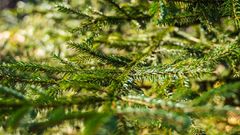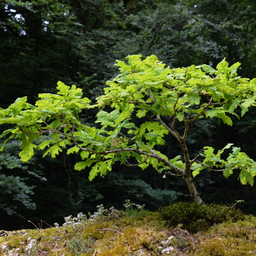
Black Alder: characteristics, use & symbolism
Discover Black Alder (alnus glutinosa), also known as Common Alder, European Alder or just Alder, its characteristics, its rich contribution to biodiversity and the versatile uses of the timber over the centuries.
Black Alder
Black Alder (alnus glutinosa), is a member of the Betulaceae family which includes birch, hazel and hornbeam. Black Alder is native to Europe. In the past, it was widely used for tanning hides and dyeing fabrics, thanks to its tannin-rich bark. It was also widely used medicinally for the numerous anti-inflammatory properties of its leaves.
Why EcoTree plants Black Alder
Thanks to the tree's extensive root system, black alder helps to consolidate riverbanks. It is also used in forestry to prepare soils, as the species cleans and enriches soils, e.g. before poplars can be planted. EcoTree plants this species because it makes it possible to diversify our forests, as it is well adapted to certain soils and has the unique property of being able enriching poor soils by fixing nitrogen thanks to its roots, where the nodules of contain nitrogen-fixing bacteria.
Black Alder - Overview
Black Alder - Overview

Black Alder - Species requirements
The black alder thrives in moist or even wet soils. It prefers acidic soils and can live in mid-mountain areas up to 1200 metres in altitude. It is the variant in the alder species that best tolerates stagnant water and heavily water saturated soils. Unlike thegrey alder, the black alder suffers very quickly from droughts, although it thrives well in full sun. It can also grow in areas with partial shade.
Black alder is a species that can survive cold winter temperatures. This species does thrive in areas crowded with trees and will try to outcompete other species. This is why it is not planted as the main species in EcoTree's forests.
Timber from Black Alder
The wood is yellowish in colour and turns red upon contact with the air. Foresters consider it to be a green manure. Reputed to be rot-proof in water, it has been used to build underground water pipes, gutters and pilings: half of Venice is made of wood from this species! It can also be used for drainage, ensuring that the water runs off and the soil is aerated. Because it burns quickly, black alder is reputed to be a good firewood. Although we do not recommend to use it as firewood, as it will release the CO2 that is otherwise sequestered in the wood.
Symbolism of Black Alder
The black alder, with its ability to thrive in wet and difficult environments, embodies resilience and perseverance in the face of adversity. Its crucial role in soil enrichment and nitrogen fixation also symbolises generosity and the ability to nurture and support others. Therefore, the species is an ideal gift for the person in your life that always goes the ekstra mile for the people around them.
Our selection of trees
Our goal is to enable anyone to do something that benefits nature and helps us to live in a more harmonious world. So why not become a tree owner in a European forest and help combat climate change?






Please note that this is promotional communication. See our notice of information.








